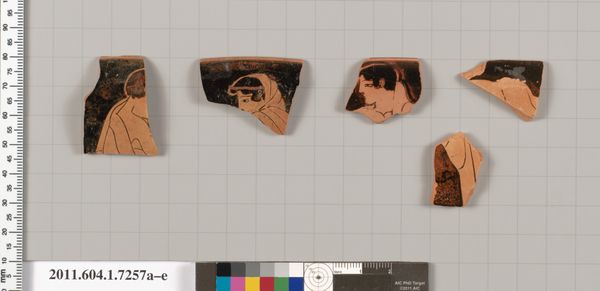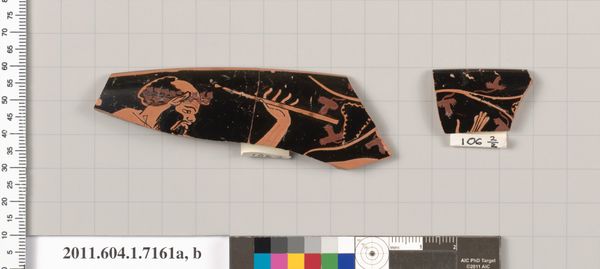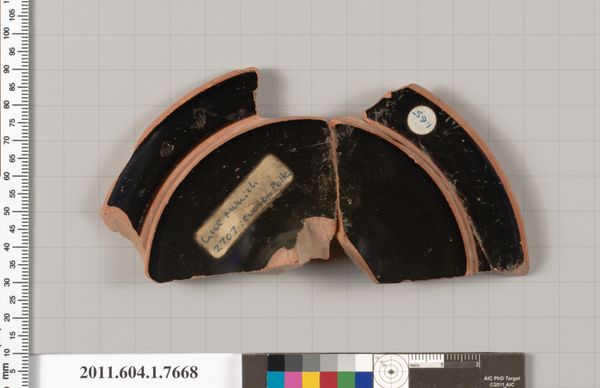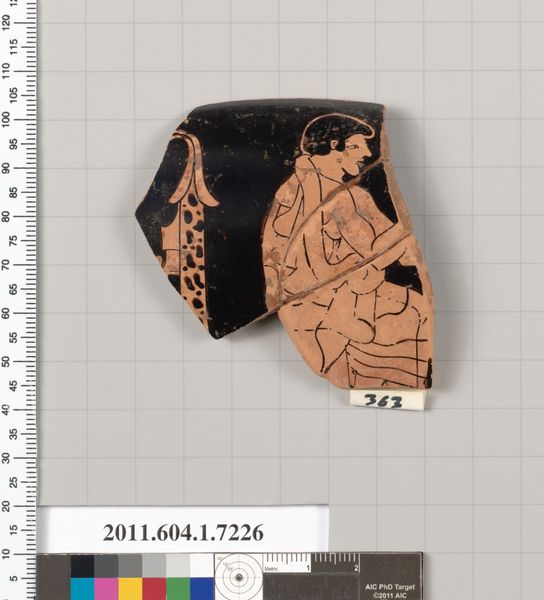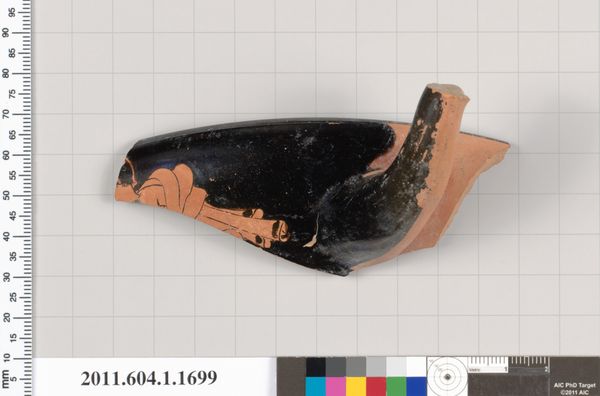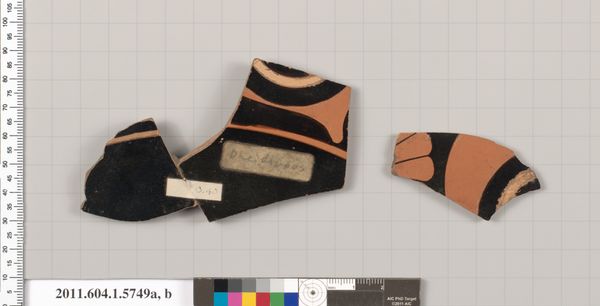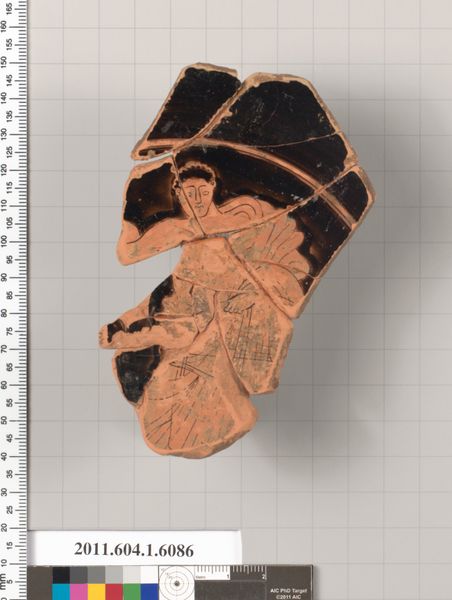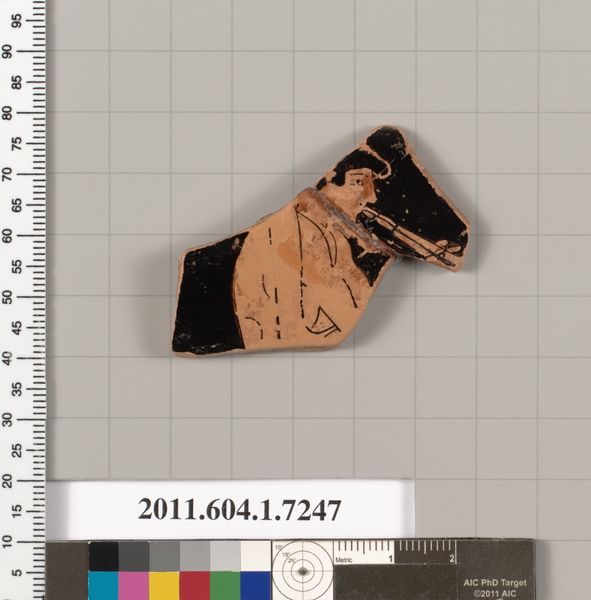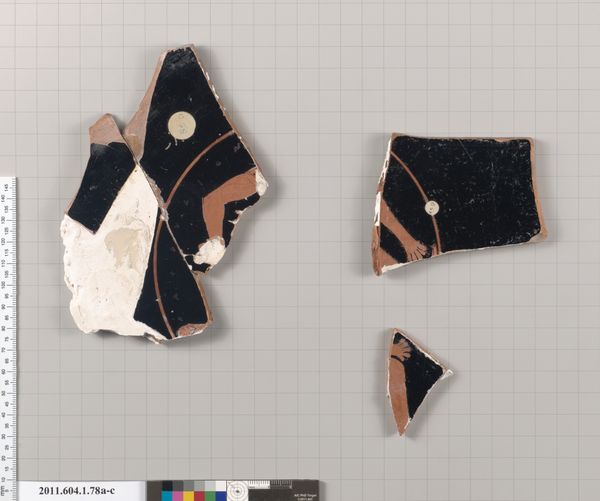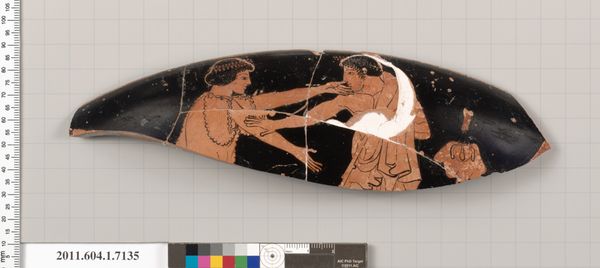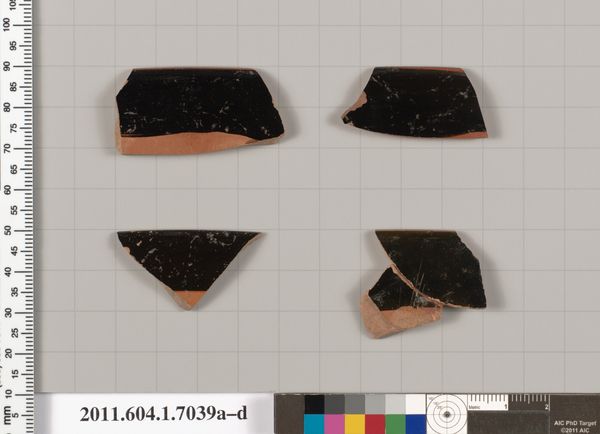
drawing, ceramic
#
portrait
#
drawing
#
greek-and-roman-art
#
ceramic
#
figuration
#
ancient-mediterranean
Copyright: Public Domain
Editor: Here we have some terracotta rim fragments from a kylix, a drinking cup, dating back to 530 BC. They're attributed to Makron and currently reside at the Met. Seeing these fragmented pieces makes me wonder about the scenes they once formed. What captures your attention most about these remnants? Curator: For me, it’s about understanding the materiality of these fragments. This isn't just "art," but a mass-produced item reflecting the social rituals around drinking and feasting. Look closely – how does the painted decoration function within the ceramic's production? Was it valued more for its form, function, or decoration? Editor: That's an interesting way to consider it. I was initially focused on trying to imagine the original narrative, the scenes depicted. Curator: Forget the 'narrative' for a moment. Think about the labor involved in creating the clay, shaping the vessel, and then executing the black-figure painting technique. It’s a complex production line. These aren't unique masterpieces crafted by solitary geniuses. What does the presence of so many of the same type of vessel at similar banquets reveal about distribution networks and social customs around consumption? Editor: So, you're saying we should focus more on the socioeconomic context of production and consumption rather than the artistry itself? Curator: The "artistry," if we even want to call it that, cannot be divorced from these material conditions! How can we use these objects, the ceramic fabric itself, to reconstruct daily life, trade routes, even systems of slavery that underpinned Athenian society? These pots are silent witnesses. Editor: I never thought about ancient Greek art that way, it really gives me a new way to approach and study these pieces, thinking about how material conditions shaped its creation and use. Thanks for sharing this point of view! Curator: It shifts the focus from the purely aesthetic to the pragmatic – the economic and social forces that gave rise to, and ultimately led to the breaking of, this kylix. Always think about who made it, and why.
Comments
No comments
Be the first to comment and join the conversation on the ultimate creative platform.
